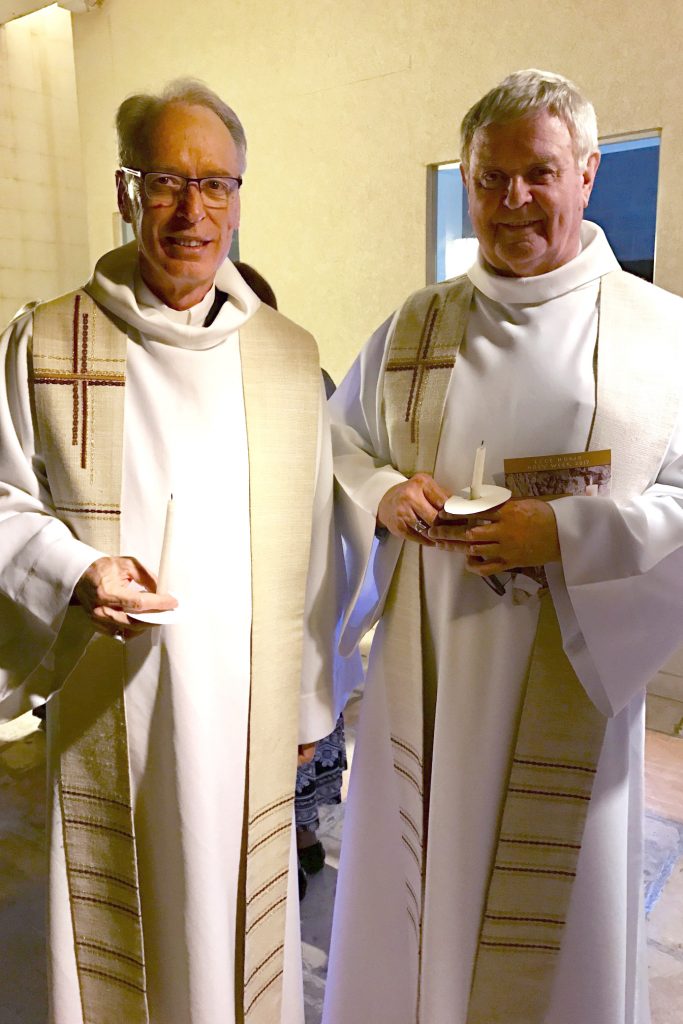
Perth Auxiliary Bishop Don Sproxton, who this month went to Israel to visit the Tantur Ecumenical Institute, wrote to The eRecord during the Easter period to speak about his experience.
In this second part of Bishop Sproxton’s experience, he continues to describe his journey in the lead up to Easter. Part Three will be published next week.
“We celebrated the Mass of the Last Supper in the late afternoon in the Church of Ecce Homo. This place is significant as it is believed that here is the Pavement, the Lithostrotos, where Jesus was made to sit on the Seat of Judgement and was condemned to be crucified by Pilate.
Beneath the buildings, you can descend to the level of the Roman Street of the first century. It is now the floor of a crypt which is set up as a small chapel.
The Sisters of Zion live and minister at Ecce Homo. They invited us to supper following the Mass and joined us as we walked to Gethsemane. We prayed there and set off to the Church of St Peter Gallicantu.
This present church is in the grounds where the house of Caiaphas stood, the High Priest who recommended that Jesus be sacrificed for the sake of the security of the people.
At least two Churches have been on this site over the last 1700 years. The Church was built in the early twentieth century by the Assumptionist Fathers and has wonderful mosaics within, including ones that tell of the denial of Christ by St Peter.
The Church is built over what appears to be a prison. These deep excavations into the bedrock helped archaeologists locate the house of the High Priest for the cells that would have been used to detain prisoners of the Jewish authorities.
The deepest cell is called the Sacred Pit and is the possible place where Jesus was confined overnight before his trials by the Sanhedrin and Pilate.
Jesus would have been left in this dark place, possibly alone, or did he spend the night with Barrabbas? The only thing in the cell is a stand on which is the text of Psalm 88. It captures the degradation, loneliness and dread that Jesus had to face in that darkness.
Very early on Friday, we left for the Old City to walk the Via Dolorosa. We had prepared for this a few days previously by our small groups composing the text for each Station of the Cross.
The first Station began at the Monastery of the Flagellation and we finished at the Church of the Holy Sepulchre. Being so early, we avoided the enormous crowds that were expected this year because of the coinciding Orthodox and Catholic Easter celebrations. Nevertheless, it was deeply moving to pray the Way of the Cross as the city was waking.
We returned to Ecce Homo in the afternoon and celebrated the Good Friday Liturgy with a big number of other English speaking pilgrims and residents of Jerusalem in the crypt over the Pavement.
Beneath the Pavement lies a cistern which has collected water at least from Roman times, with the water and humidity keeping the chapels cool.
The celebration was simple and reverent, and touched each of us, despite our tiredness.
We returned to Tantur by walking back along parts of the Via Dolorosa and David Street, through growing crowds of Jewish families rushing to begin Shabbat, a special Sabbath because it falls in the week of Passover festivities.
This week we have the opportunity to hike along a Wadi through the local countryside and to enter Beit Jala to be hosted for lunch by Kamal Mukarkar and his family. He is an Orthodox Palestinian who had been our guide when we visited Bethlehem and Herodian, and he considers it an honour to offer us hospitality.
We will also attend the ceremony of the Holy Fire which will be conducted by the Greek Patriarch.
This new fire will be flown to the great Orthodox centres around the world. Then we go to celebrate the Resurrection in the Great Vigil at Ecce Homo.”
Pilgrims spreading the Holy Fire via candles in the Orthodox Church. Photo: Gemma Thomson